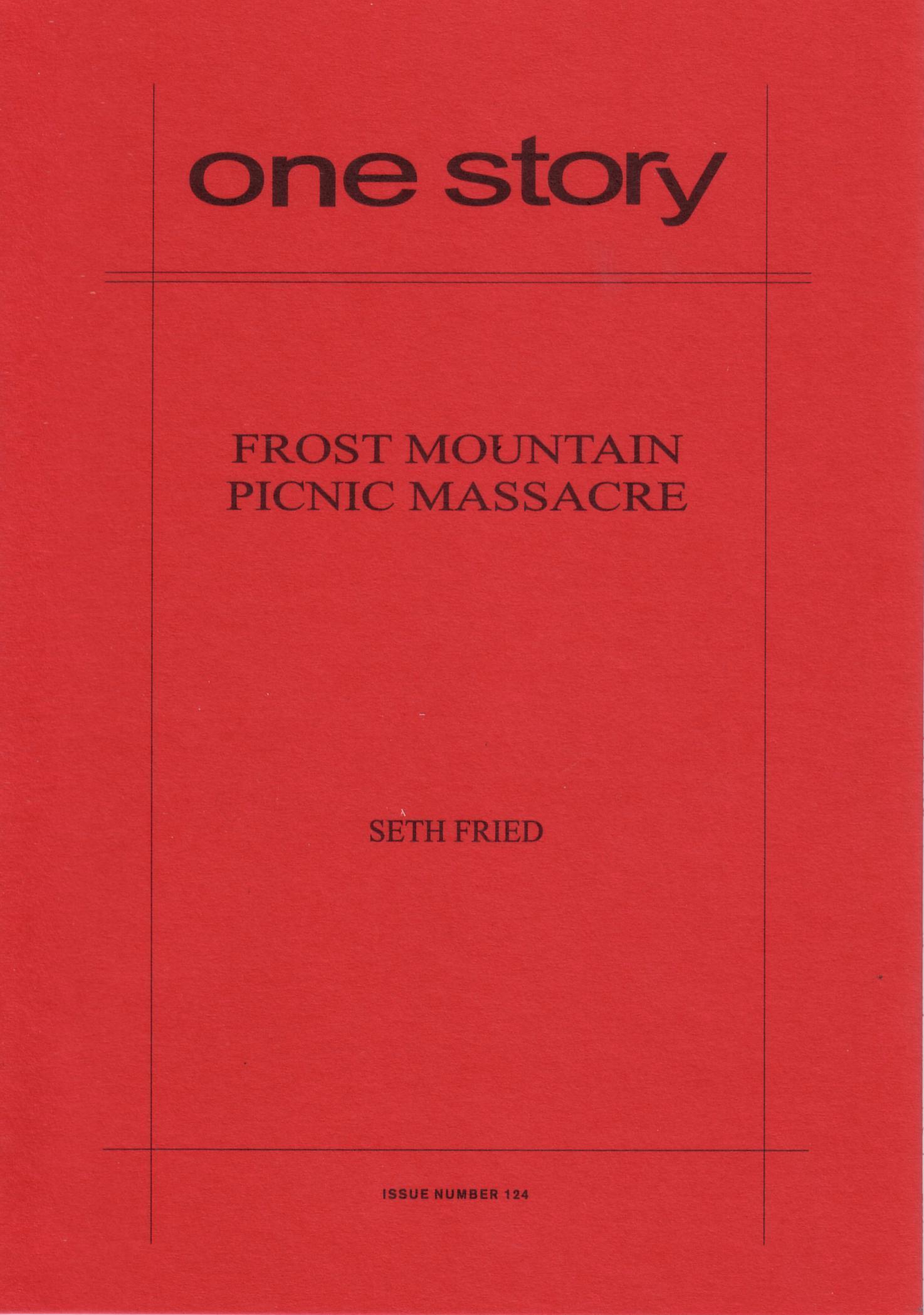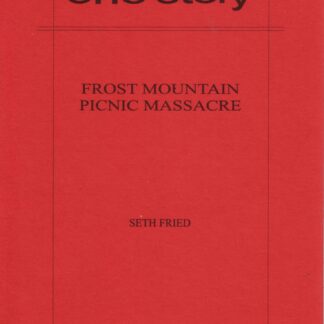
Frost Mountain Picnic Massacre
$2.50
30 in stock
Excerpt
Last year, the people in charge of the picnic blew us up. Every year it gets worse. That is, more people die. The Frost Mountain Picnic has always been a matter of uncertainty in our town and the massacre is the worst part. Even the people whose picnic blankets were not laid out directly upon the bombline were knocked unconscious by the airborne limbs of their neighbors, or at least had the black earth at the foot of Frost Mountain driven under their eyelids and fingernails and up into their sinuses. The apple dumpling carts and cotton candy stands and guess-your-weight booths that were not obliterated in the initial blasts leaned slowly into the newly-formed craters, each settling with a limp, hollow crumple. The few people along the bombline who survived the blast were at the very least blown into the trees.
The year before that, the boom of the polka band had obscured the scattered reports of far-off rifles. A grown man about to bite a caramel apple suddenly spun around wildly, as if propelled by the thin spray of blood from his neck. An old woman, holding her stomach, stumbled into a group of laughing teenagers. Someone fell forward into his funnel cake, and all day long we walked around as if we weren’t aware of what was happening.
Seth Fried
Seth Fried’s stories have appeared in McSweeney’s, The Missouri Review, Ninth Letter, and many others. He recently finished his first collection and is currently at work on a novel. You can follow him at his blog: sethfried.blogspot.com.
Q&A by Pei-Ling Lue
- PL: Where did the idea for this story come from?
- SF: It started out as a riff on the Dylan song Talkin’ Bear Mountain Picnic Massacre Blues. It’s a wry, darkly funny song and I really wanted to try to do something in the spirit of it. Though, the story eventually took on a life of its own, and now the similarities between the two are sort of incidental.
- PL: What was the most challenging aspect of writing this story?
- SF: When you have an absurd premise, it’s hard to know when you need to explain something and when it’s ok to just shrug your shoulders and say, “This story is crazy.” That’s something that was particularly difficult with this story, because the passivity of the communal narrator isn’t supposed to make any sense. It’s supposed to reflect behavior I recognize in myself and in the world at large which also doesn’t make any sense. So it was difficult to reconcile the whole conceit of the narrator’s illogical behavior with my responsibility to the reader.
- PL: It can be difficult to tell a story from a first person plural narrator, but you succeed in using this to create an ominous atmosphere. What inspired you to use this style?
- SF: The idea of community and how people behave in groups was pretty important in this story, so first person plural made a lot of sense in that respect.
- PL: Some of the yearly massacres at the picnic are macabre, others are very funny, and all of them are infused with images that linger in the mind. Where did you get all of these ideas for the different massacres?
- SF: I was still finishing my undergrad when I wrote this story. While generating ideas for the story, I had a page in one of my course notebooks that I titled, without realizing how creepy I was being, Ideas for Massacres. I filled it up with as many ideas for ridiculous massacres as I could think of while pretending to take notes in class. I then proceeded to lose said notebook. As a result, I spent the rest of that semester terrified of the possibility that someone would find that notebook and that I would be arrested for plotting to kill people by means of strategically set-loose gorillas. But most of the massacres in the story are ones that I remembered from that list, which was written off the top of my head while I was pretending to be studious.
- PL: The Frost Mountain Picnic seems to be an allegory to the Bush administration and the Iraq War. Was this an influence while writing this story?
- SF: Definitely. I wrote this in 2006, a time when I felt pretty helpless about everything that was going on in the world. I felt like our country was showing that administration an undue amount of patience. More generally, I wanted the story to look at how an ugly status quo can be maintained when people are uncomfortable existing outside of what is accepted as normal.
- PL: Face painting propels a large part of this story. Why did you choose to use this as a device?
- SF: The choice of face painting was arbitrary, kind of the way all trends are. But the reason it’s featured so prominently in the story is because (for kids especially) participating in a trend is about wanting to be normal. The parents are sensitive to their children’s need to have their faces painted, because they want their children to have the advantage of being normal. It’s that same impulse toward normalcy that keeps the parents from doing anything about the picnic.
- PL: The last scene is very dramatic and menacing. What did you want readers to leave this story with?
- SF: If any of the anxieties expressed in this story are familiar to readers, I hope that readers will take comfort in seeing those anxieties on the page. I always feel relieved when I read a story and the author is expressing some concern about the world that I share. It’s cathartic. That’s the level of communication that I’m always hoping for whether I’m reading a story or writing one.
- PL: How long did it take you to complete this story?
- SF: I wrote the first draft of this story in about two weeks. Then I tinkered with it off and on for three magic-filled years.
- PL: What are you working on now?
- SF: I’m finishing up the manuscript of what will hopefully be my first collection. I’m also starting work on a novel.
- PL: What is the best bit of advice about writing you have ever received?
- SF: This Rilke quote is kind of a creative writing course standard, but it has always meant a lot to me:
“Above all, in the most silent hour of your night, ask yourself: Must I write? [...] If you can confidently meet this serious question with a simple, “I must,” then build your life upon it. It has become your necessity. Your life, even in the most mundane and insignificant hour, must become a sign, a testimony to this urge.”
